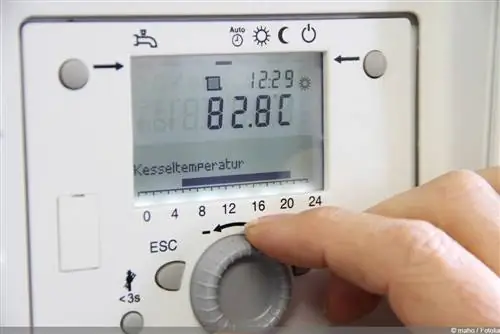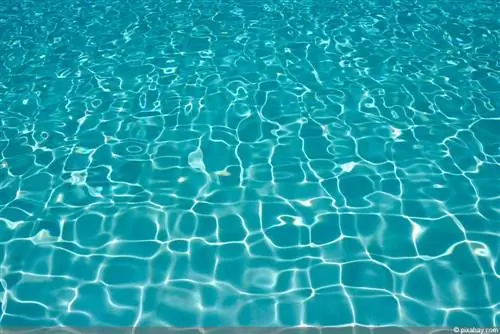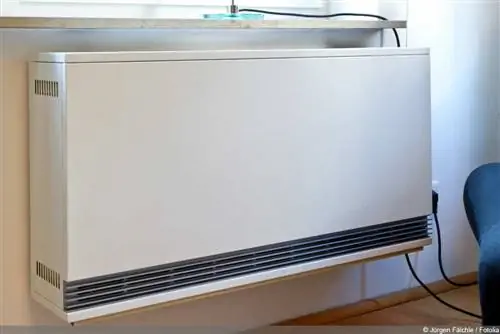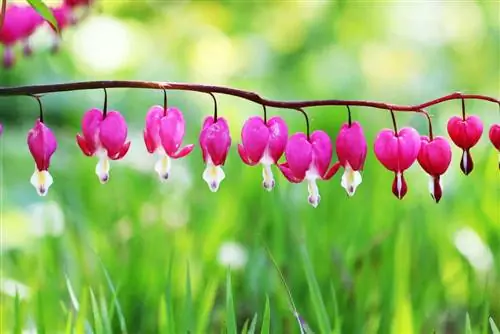- Author admin [email protected].
- Public 2023-12-17 03:39.
- Last modified 2025-01-24 12:45.
If the heating no longer gets really warm, it's more than annoying and unpleasant. Over time, the lack of heat can also promote the formation of mold. Therefore, quick action is required. With our step-by-step instructions, it is quick and easy to bleed the oil line and thus restore full heating output.
Preparation
If it is unclear whether the heating cable has weakened due to air in the pipe, the tank filling should be checked first. If this is empty or not filled enough, there may be difficulties when sucking in the heating oil.

The individual elements of the oil pump should then be checked. If damage, leaks or loose lines are found, specialist personnel must be called in. If you try to carry out a repair yourself, further damage and risks could arise.
Bleeding the line, however, is quick and easy if the appropriate steps are followed.
Instructions
Bleeding the oil line is easily possible even for laypeople, but requires the right procedure and the right utensils.
Users needed
- Pipe wrench or wrench
- Cloth
- Bucket
- Rubber gloves
- possibly a large diameter hose or flexible pipe
Step by step
Once these aids and tools are ready, bleeding can begin. This requires the following steps:
- Turn off the heating. Otherwise, work on the heating could be dangerous.
- Find the vent valve. This is a so-called grease nipple, which is vaguely reminiscent of a screw.
- A bucket or a shallow tray is placed under the vent valve, as not only air but also oil will escape when venting. This can splash, so it may be useful to place an additional cover under the bucket or tub.
- The valve is easily opened with a wrench or a small pipe wrench. More than one or a maximum of two rotations should not be carried out. Otherwise the valve may fall out.
- Press the reset button. This starts a heating cycle. During this process the air is pushed out of the line. However, it can also happen that heating oil drips or even sprays out. Therefore, bleeding should only be carried out with appropriate precautions and under supervision.
- If all the air has not been removed from the line during venting, another heating cycle must be started and the reset button must be pressed again. Due to a lock that is often set, this may only be activated once or twice. If this is the case, the button must be kept pressed until the heating system starts up again. By holding it longer, the lock can be bypassed.
- Only when the hissing from the pipe can no longer be heard can the venting valve be closed again. It is important to ensure that it is tightened but not overtightened. Otherwise the coil could be damaged and replacement may be required. On the one hand, this is very complex and, on the other hand, very expensive.
Tip:
If a bucket, tub or bowl does not fit under the valve, a flexible pipe or hose can be held over the valve. The air can still be removed, but this prevents oil from being distributed into the surrounding area.
Prevention
Air in the pipe can be prevented by maintaining the system appropriately. It should therefore always be ensured that the suction hose is kept close to the bottom of the tank and that the tank is filled so that no air can be sucked in.
Regular checks also ensure that the pipes remain free of air bubbles and that an even heating result can be achieved. In addition, regular checks mean that the effort involved in venting can be kept very low and there are usually only a few air bubbles in the oil or in the line.






